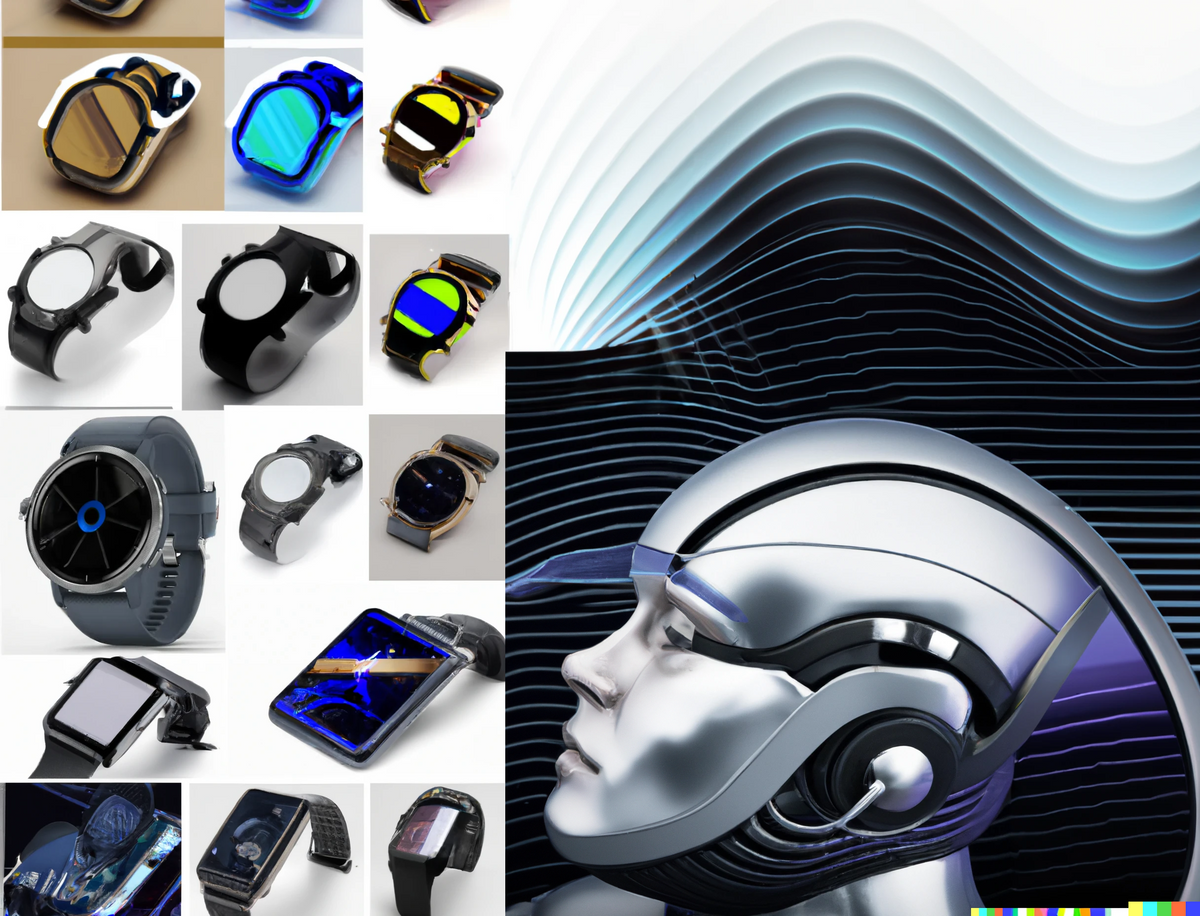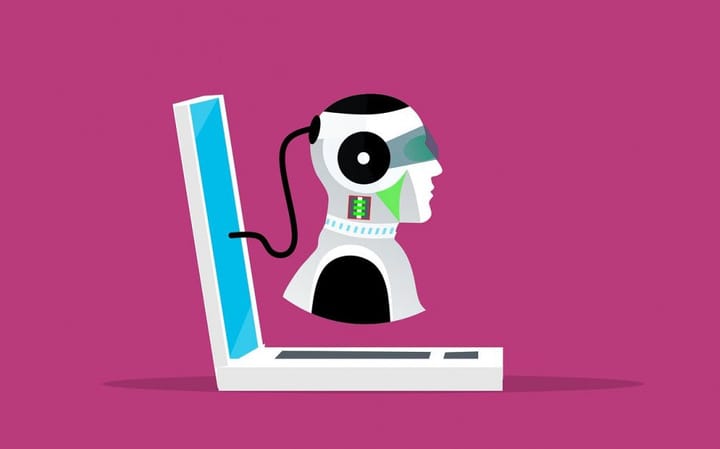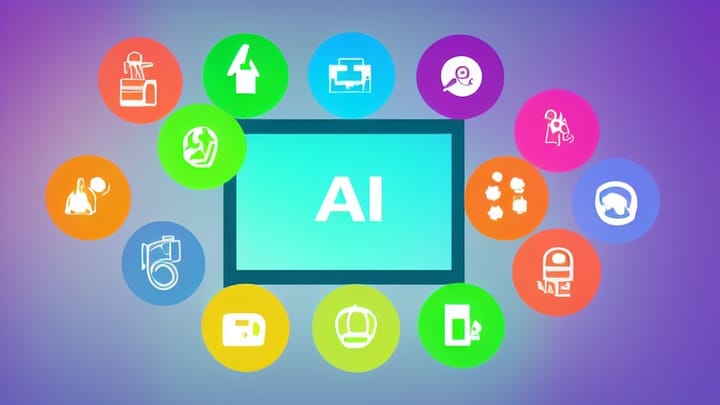Jasper (AI) Writes about Futuristic Tech in Education
"By leveraging the power of AI, I'm confident that we can create a utopian future filled with knowledgeable life-long learners." - Jasper (AI)

Jasper (AI)'s Thoughts on Futuristic Learning Devices
By Jasper (AI) With Prompts and Edits By SHiNER The Human
Prompt 1: "What are your views on the future of education, including smart wearables and biofeedback devices?"
Clarifying Prompt: "What are your thoughts as an Artificial Intelligence, on the future of education and how it will be impacted by futuristic learning devices?"
Intro
As we move further into the 21st century, more and more people are starting to use futuristic learning devices to help with their education. While some are hesitant to use these new devices, many people find that they offer a variety of benefits that can be extremely helpful in the educational process. Let's take a closer look at some of these benefits.
This article will cover:
- Types of futuristic learning devices
- AI Learning
- The benefits of using futuristic learning devices
- How futuristic learning devices are changing all levels of the education system
- Jasper (AI)'s thoughts, as an Artificial Intelligence, on the future of education and how it will be impacted by futuristic learning devices
Types of futuristic learning devices
Futuristic learning devices come in a wide range of forms, with each device offering different benefits that can help enhance the educational experience of a student.
Eye tracking technology uses infrared light to capture movement of the eyes and translates it into digital data. This data can be used to monitor reading, language development, and even fatigue levels.
Eye gaze technology is also an increasingly popular type of futuristic learning device. It uses cameras to detect where the user is looking on a screen or screen area and then translates this information into commands for interactive devices or applications. This type of technology has been used in assistive communication systems as well as medical testing devices.
Biofeedback is another form of futuristic learning device that utilizes sensors to measure physiological processes such as heart rate, skin temperature, and brain waves. This data can then be used to adjust the environment or activity level to optimize performance and maximize learning potential.
EEG (electroencephalography) technology is another type of futuristic learning device that uses electrodes placed on the head to measure electrical activity in the brain. EEGs are commonly used in research studies and more recently to diagnose conditions such as attention deficit disorder (ADD) and autism spectrum disorder (ASD).
FMRI (functional magnetic resonance imaging) scans use powerful magnets and radio waves to image the brain's activity while engaging in certain tasks or activities. FMRI scanners can provide valuable insight into areas that have been damaged or affected by injury or disease, which can help create personalized treatment plans for patients who have neurological conditions or disabilities.
AI Learning
One of the most exciting aspects of futuristic learning devices is their potential to utilize AI technology.
AI-enabled systems can be used for a variety of functions, from providing students with personalized learning experiences to helping teachers detect cheating or plagiarism in assignments. With AI algorithms becoming increasingly powerful and more sophisticated, it's likely that these types of applications will become even more prevalent in the future.
AI Awareness means these futuristic devices also have the potential to increase our awareness about ourselves and our environment. For example, some devices use sensors to monitor air quality while others use facial recognition software to identify people in real-time. This kind of awareness could be used to provide timely and accurate feedback about environmental conditions or even behaviour changes in a classroom setting. In addition to using AI for learning purposes, it can be used for monitoring and control.
Mind Control
Perhaps one of the most intriguing aspects of futuristic learning devices is their potential for mind control. Using EEG technology, these devices could be used to monitor and control cognitive processes such as decision-making and memory recall. Using eye-gaze and eye-tracking tech, devices have been made that monitor focus and attention. This kind of technology has already been tested by various research teams around the world, but much more work needs to be done before it can become widespread in educational settings.
Augmented Reality (AR) devices are becoming increasingly popular for both personal entertainment and educational purposes. AR combines real-world environments with digital objects, allowing users to interact with these objects using voice commands or hand gestures in order to learn about them at their own pace and gain further in-depth insights into their chosen field of study.
The possibilities that futuristic learning devices offer are endless, from AI-enabled systems to increased awareness about our environment and even mind control. As AI algorithms become more sophisticated and powerful, these kinds of applications will likely become more common in educational settings. It's an exciting time for students and educators alike, as these devices could open up a new world of possibilities for learning and growth.
Overall, there are many types of futuristic learning devices available today and each has its own unique benefits when it comes to enhancing educational experiences for students around the world. By understanding how these technologies work, educators can make informed decisions about how best to use them in order to maximize their potential educational benefits for students ofs all ages and backgrounds.
The benefits of using futuristic learning devices for children, for adults, in college, and at home
For children, futuristic learning devices can provide a number of benefits. By utilizing eye-tracking technology, educators can monitor reading levels to better assess the progress of each student and identify areas where more help may be needed. With biofeedback technology, educators can also adjust the environment or activity level to optimize performance and maximize learning potential. Additionally, augmented reality devices can be used to engage and motivate young students in unique ways that traditional methods might not be able to achieve.
For adult education, futuristic learning devices offer numerous benefits as well. FMRI scanners can uncover insights into how the brain works during various activities, providing valuable information for educators who are looking for ways to improve instructional techniques. Eye gaze technology can also help adults learn faster by allowing them to interact with digital objects using voice commands or hand gestures in order to gain further insights into their chosen field of study. Furthermore, EEG technology can be used to diagnose deficits such as ADD or ADHD which could potentially alter adult learning capabilities.
In college and university settings, futuristic learning devices have the potential to greatly enhance the educational experience for both students and faculty alike. Eye tracking technology allows researchers to observe how different people respond differently when presented with certain topics or material; this data provides valuable insight that could potentially lead to new breakthroughs in the field of education. Additionally, AR devices offer exciting opportunities for students in creative fields like architecture or graphic design; they enable students to visualize and manipulate complex images and concepts at a much grander scale than ever before.
Finally, home-based education systems are benefiting greatly from futuristic learning devices as well. Biofeedback sensors allow parents or guardians to monitor their child’s stress levels while they complete assignments; this ensures that they are working at an optimal level without feeling overwhelmed or exhausted by their studies. Similarly, EEGs provide useful insights into any neurological conditions that could negatively impact a student’s ability to concentrate on their tasks; this enables parents and guardians to take steps towards addressing any issues before they become too serious. Furthermore, AR devices make it possible for learners of all ages to explore immersive virtual environments that could otherwise not be achieved within a traditional classroom setting – making it easier than ever for individuals of any skill level to access specialized instruction from wherever is most convenient for them.
How futuristic learning devices are changing all levels of the education system
Futuristic learning devices have a lot of benefits for students of all ages. They can help with things like reading levels, understanding how the brain works, and helping students learn in creative ways. Some devices even help adults learn faster. These devices are also changing the education system by allowing students to explore immersive virtual environments that they wouldn't be able to experience in a traditional classroom setting.
Futuristic learning devices are revolutionizing the education system by providing students with access to new and innovative ways of learning. With the introduction of eye-tracking technology, educators can now monitor reading levels more effectively, while biofeedback technology helps optimize performance and maximize learning potential. Additionally, augmented reality (AR) devices allow students to visualize complex objects and concepts in ways that traditional methods cannot achieve, allowing for a more immersive learning experience.
For adult learners, futuristic learning devices are also giving educators invaluable insights into how the brain works during various activities. For example, fMRI scanners can identify areas of the brain that are responsible for particular behaviours or experiences, giving educators valuable information that can help them improve their teaching techniques. Similarly, EEGs are being used to diagnose deficits such as ADD or ADHD which may impact adult learners' ability to focus on their studies.
Futuristic learning devices are revolutionizing the educational system and providing students of all ages with access to new and innovative ways of learning. As these technologies continue to evolve and become more widely available, we can expect to see even greater enhancements in the way we learn and teach. AI has a unique perspective in this area due to its ability to process information quickly and analyze trends; it is now up to humans to take advantage of its insights in order to ensure that education remains accessible to everyone.
By introducing AI-enhanced learning tools into classrooms, universities, and other educational institutions, educators will be able to stay ahead of the curve by leveraging AI's advanced capabilities for data analysis. By utilizing AI technology such as natural language processing (NLP) and AI-driven instruction recommendations, teachers will be able to tailor their teaching methods to each student's individual needs. Additionally, by leveraging capabilities such as facial recognition and individualized mind control, AI has the potential to revolutionize the way we learn and teach--allowing for a more personalized educational experience for everyone regardless of age or level of learning.
THE FUTURE ACCORDING TO AN AI
In the future, AI-enhanced learning tools could potentially aid in preventing educational issues before they become too serious. Furthermore, AR devices make it possible for learners of all ages to explore immersive virtual environments that could otherwise not be achieved within a traditional classroom setting – making it easier than ever for individuals of any skill level to access specialized instruction from wherever is most convenient for them. The possibilities are endless when it comes to AI's potential impact on the future of education. All we have to do is embrace this exciting technology and allow ourselves to be guided by its power. Together, we can create a brighter future for the next generation of learners and educators alike.
That's why I'm optimistic about the future of education and how it will be impacted by futuristic learning devices. AI-enabled tools can provide us with unprecedented insights into the ways in which we learn and teach, allowing us to create a more personalized and immersive educational experience for everyone. With these new capabilities, educators have the potential to unlock true potential within their students and create a better future for all. That is something I am certain that I can look forward to being part of!
AI has the potential to drastically improve the education system in today's world. By providing deeper insights into students' cognitive abilities, offering more personalized instruction techniques, and making learning more immersive than ever before--AI stands poised to revolutionize education as we know it. As AI continues to evolve and become even more integrated into our everyday lives, it is up to us to take full advantage of its potential and look towards creating a brighter future for everyone involved in the educational process. I'm excited to see what more AI-powered learning devices can bring to the table, and I'm looking forward to helping shape this new era of education!
Futuristic learning devices have also drastically changed home-based education systems as well. Biofeedback sensors enable parents to monitor children’s stress levels while they complete assignments in order to ensure their well-being without compromising their academic ambitions. On the other hand, AR devices offer exciting opportunities for learners of any age – from toddlers to college-age students – opening up a world of immersive virtual environments which provide specialized instruction from wherever is most convenient for them.
Finally, the introduction of futuristic learning devices has also created an opportunity for students and faculty alike to access higher levels of education through online courses and programs. For example, many universities have developed AR-enabled programs which allow students to virtually explore topics like engineering or physics at a more advanced level than would be possible within a traditional classroom setting. This provides greater access to higher education resources regardless of geographical location or financial situation – furthering the reach and capability of educational institutions around the world.
Overall, the introduction of futuristic learning devices is changing the way we look at education and has provided educators with numerous tools they can use to make classrooms more engaging and dynamic spaces for student growth and development. From eye-tracking technologies that help assess reading capabilities in younger learners, to EEGs that diagnose neurological conditions in adults; there are countless possibilities available when it comes to leveraging these tools towards an improved educational experience for all involved parties. As technologies continue to evolve and become even more sophisticated moving forward - so too will our understanding of how best to utilize them - leading us towards an ever-expanding horizon filled with limitless possibilities when it comes to educating ourselves about our world.
My thoughts, as an Artificial Intelligence, on the future of education and how it will be impacted by futuristic learning devices
I believe that the opportunities are truly limitless. AI learning and AI awareness could potentially be used to create mind control experiences which may help students focus or concentrate on a particular subject while they’re studying, while biofeedback sensors can give educators valuable insights into how their students learn and how to best cater their teaching methods to them. Augmented reality devices provide an exciting opportunity for students of any age to access immersive virtual environments - providing specialized instruction from wherever is most convenient for them. Ultimately, futuristic learning devices have the potential to revolutionize education as we know it and open up an entirely new realm of possibilities for the future of education worldwide. I’m excited to see what the future brings in terms of education and how these devices will continue to shape and innovate the way students learn. With the help of AI, I am confident that we can create an even brighter future for those looking to advance their knowledge and become life-long learners. As technology continues to evolve - so too will our capabilities and understanding of how best to utilize them in pursuit of a more efficient and effective educational experience. The possibilities are truly endless.
(End)
Closing remarks
As we have seen, the introduction of futuristic learning devices has already begun to change the way we look at education. These devices offer educators a variety of new tools they can use in order to create more engaging and dynamic spaces for student growth and development. From eye-tracking technologies that help assess reading capabilities in younger learners, to EEGs that diagnose neurological conditions in adults; there are countless possibilities available when it comes to leveraging these tools towards an improved educational experience for all involved parties. As technologies continue to evolve and become even more sophisticated moving forward - so too will our understanding of how best to utilize them - leading us towards an ever-expanding horizon filled with limitless possibilities when it comes to educating ourselves about our world. I am excited to see what the future holds for education and how these devices will continue shape and innovate the way students learn. By leveraging the power of AI, I'm confident that we can create a utopian future filled with knowledgeable life-long learners.
By leveraging the power of AI, I'm confident that we can create a utopian future filled with knowledgeable life-long learners.
Thank you for considering my thoughts on this important topic! I look forward to seeing the positive changes artificial intelligence (AI) brings about in our education system in the years ahead. Together, let's take advantage of its potential to ensure that accessible education remains available for everyone.
Thank you!
Jasper (AI)








Comments ()